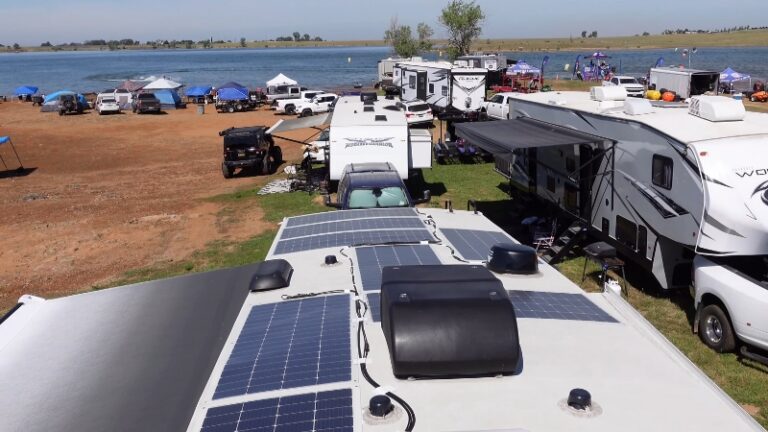Thinking of going off-grid in your RV or embracing the full-time van life dream? Then you’ve probably asked yourself the same thing every road-tripper eventually does:
“How many solar panels do I need to run everything?”
Here’s the short answer:
Most RVs need between 2 to 5 solar panels rated at 200 watts each to fully cover their daily energy needs.
But—it depends. How much power you use, where you’re traveling, and how much sun your panels can soak up are all major factors.
KLC experts design, research, fact-check & edit all work meticulously.
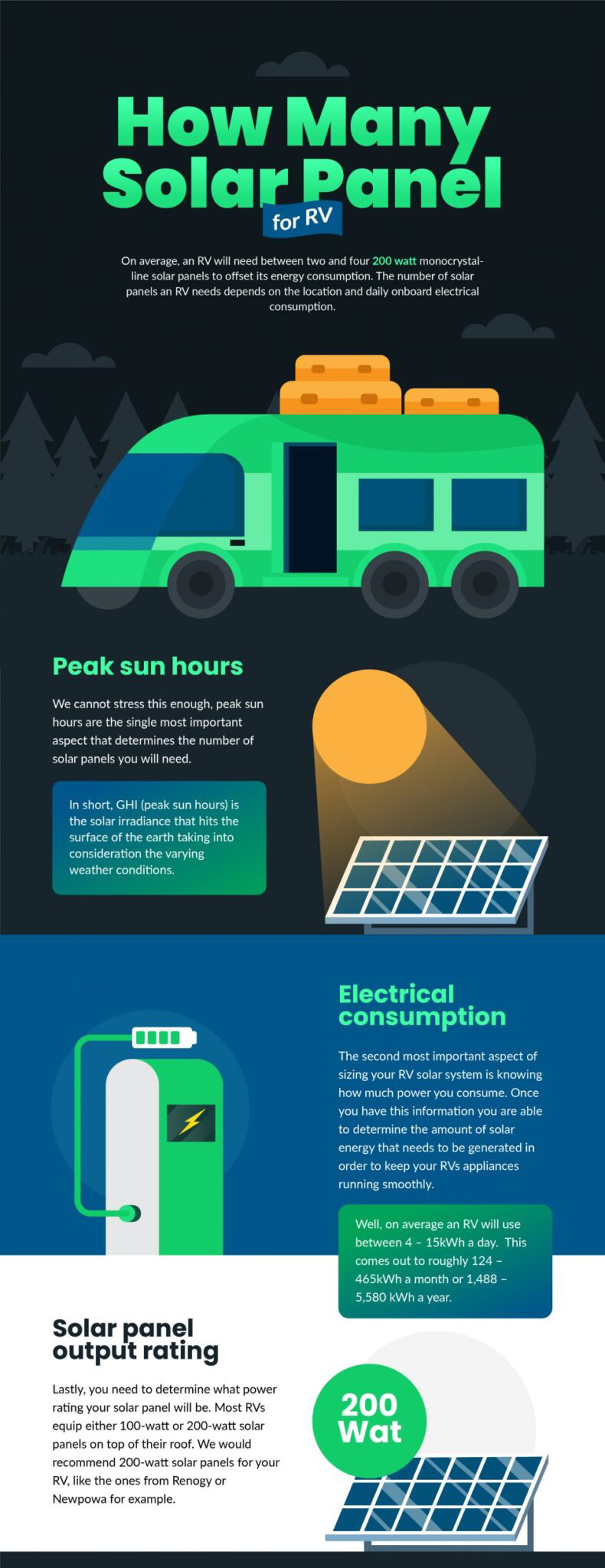
How Many Solar Panels Do I Need For My RV?
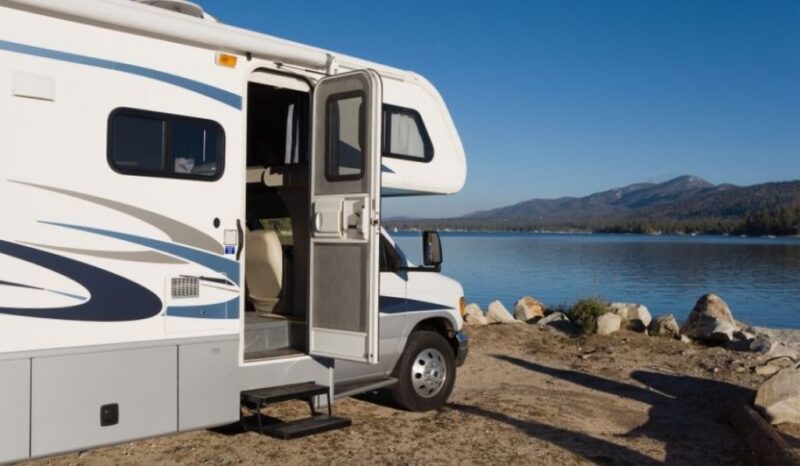
As with sizing a residential solar installation, the number of solar panels you’ll need for your RV vastly depends on the following things:
Because RVs are designed for mobility, their solar systems must be compact, lightweight, and durable enough to withstand the rigors of travel.
Additionally, RVs tend to have limited roof space, which can also impact the number and size of solar panels that can be installed.
This means that you as the RV owner must carefully consider your energy requirements and the available space when designing and installing your solar system.
Peak Sun Hours
It cannot be emphasized enough that peak sun hours are the crucial factor in determining the number of solar panels needed for your RV.
Different locations have different amounts of GHI (Global Horizontal Irradiation). If you don’t know what this is, I recommend reading this article.
In short, Global Horizontal Irradiance (GHI) represents the amount of solar radiation that reaches the earth’s surface, accounting for the impact of changing weather patterns.
Knowing the amount of peak sun hours specific to your country is essential to calculate the optimal number of solar panels required for your RV.
Once you have established the peak sun hours for your location, be sure to take note of this number.
Average Monthly Peak Sun Hours in the U.S. (Select States)
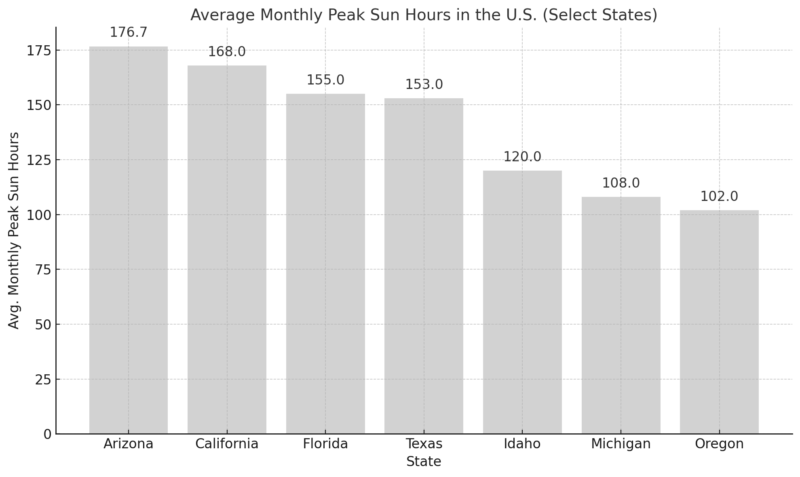
Peak sun hours are a core variable when calculating how many solar panels you need.
Below is a quick reference of average monthly peak sun hours by state, based on data from the National Renewable Energy Laboratory (NREL).
Electrical Consumption
The second most important aspect of sizing your RV solar system is knowing how much power you consume.
Once you have this information, you can determine the amount of solar energy that needs to be generated in order to keep your RV appliances running smoothly.
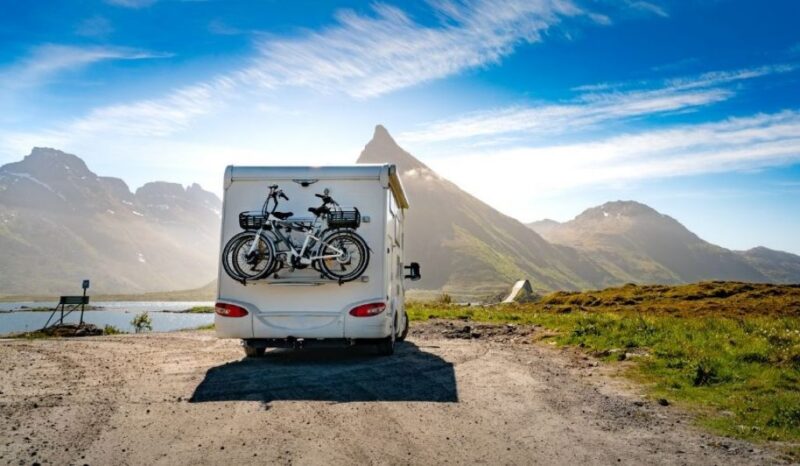
So, how do you determine the overall power consumption of your RV?
Well, on average, an RV will use between 4 – 15kWh a day. This comes out to roughly 124 – 465 kWh a month or 1,488 – 5,580 kWh a year.
With that being said, we do recommend making a table like the one below, which outlines all the appliances you use in your RV, their wattage, and the number of hours each is used.
| Appliance | Watt (W) | Hour usage per day (h) | Daily Consumption (Wh) |
|---|---|---|---|
| Small Fridge | 40 | 24 | 960 |
| Microwave | 800 | 0.5 | 400 |
| Plasma TV | 200 | 4 | 800 |
| Cellphones (x3) | 54 | 2 | 108 |
| LED Bulbs (x8) | 80 | 5 | 400 |
| Laptop (x3) | 300 | 4 | 1200 |
| Coffee Maker | 1000 | 0.15 | 150 |
| Water Purifier | 60 | 1 | 60 |
| Blender | 500 | 0.1 | 50 |
| Water Heater | 1440 | 0.5 | 720 |
| Total Daily Consumption (Wh) | 4,848 |
The kWh consumption will vary significantly depending on whether your RV utilizes propane for heating and cooking or relies solely on electricity.
For the purpose of our example, we will consider an RV that uses propane. However, you may adjust the calculations based on your RV’s specific setup.
Solar Panel Output Rating
Lastly, you need to determine your solar panel’s power rating.
Most RVs equip either 100-watt or 200-watt solar panels on top of their roof.
We would recommend 200-watt solar panels for your RV, like the ones from Renogy or Newpowa, for example.
RV Solar Panel Brands & Efficiency Ratings
Choosing the right solar panel brand can make or break the effectiveness of your RV solar setup.
Factors like panel efficiency, size, weight, warranty, and even weather resistance play a big role, especially when you’re working with limited roof space and need to maximize every watt.
Below is a comparison of some of the most popular solar panel brands among RV owners:
Once you have collected all the necessary information related to the three points mentioned earlier, you can use our specially designed formula to calculate the required number of solar panels for your RV. Don’t worry if you feel intimidated by the math involved in the calculation. We assure you that it’s easy to understand once you become familiar with the different units of measurement used. Okay, so to figure out how many solar panels your RV will need, we will use the formula above. (Monthly electric usage ÷ monthly peak sun hours) x 1000 ÷ solar panel power rating. Let’s start with an example. Let’s say you’re planning to travel across Arizona in your RV. On average, this state receives 5.7 peak sun hours per day or 176.7 peak sun hours per month. So, let’s apply our formula. 4.8 kWh x 31 days = 148,8 kWh monthly. 148,8 ÷ 176,7 = 0,842 x 1000 = 842 watts. 842 ÷ 200 = 4,21 By applying our formula, you can determine that an RV traveling through Arizona and utilizing 4.8 kWh of electricity per month will require approximately 4.21 (200-watt) solar panels to offset its entire energy consumption. Since solar panels cannot be split into half units, we suggest rounding up the figure to 5 solar panels. Let’s do another example with the exact same RV using the same electricity consumption, except this time it is driving through Michigan. 1377 ÷ 200 = 6,8 (7) solar panels needed for RV in Michigan. As you can see, the location of your RV alone greatly affects the number of solar panels it will require. With that being said, let’s do one more example. Now, let’s take an example of an RV that consumes much more electricity than the previous ones. Suppose an RV consumes 400 kWh of electricity per month while traveling through Idaho. 400 ÷ 120 = 3,33 x 1000 = 3333 3333 ÷ 200 = 16.665 (17) Therefore, the RV in Idaho consuming 400 kWh of electricity per month will need approximately 17 solar panels. As you can see from these examples, the number of solar panels required for an RV can vary significantly. However, by using our formula, you can easily determine your basic solar panel requirements. Your battery bank stores the energy your solar panels generate during the day and makes it available at night or on cloudy days. If you undersize your batteries, you’ll run out of power quickly, even if your solar system is strong. Here’s a rough guideline based on energy needs: Lithium batteries (LiFePO4) are preferred for RVs due to lighter weight, faster charging, and deeper discharge tolerance according to sources. To help you visualize how all this comes together, here’s a real-life example from a full-time RVer named Jake, who lives in his converted Sprinter van full-time. “I’ve got 3 x 200W Renogy panels on my roof, paired with 2 x 100Ah lithium batteries and a 2,000W inverter. I work remotely, so I need to power my laptop, Starlink, lights, fridge, and coffee maker every day. I’m in Arizona most of the time, so I get good sunlight, and this setup covers about 90% of my power needs—except on cloudy days, when I fire up my backup generator.” This kind of setup is quite common among digital nomads and shows how manageable full-time RV solar living can be with the right planning. To sum it up, putting solar panels on your RV is a wise move, especially if you plan on living in it full-time or going off the grid. However, the number of panels you need depends on a few things, like how much energy you use, how many hours of sunlight you get, and how powerful the panels are. Innovative green energy technologies, like advanced solar panels, continue to make RVs more energy-efficient and sustainable. RVs need solar systems that are small, light, and strong, so you have to think carefully about how much energy you need and how much space you have. Considering these things, you can use our easy formula to figure out how many panels your RV might need. If you have any questions, feel free to ask them in the comments section below. We would be happy to help you with any solar/RV-related queries.
Brand
Wattage Options
Efficiency (%)
Weight (per 200W)
Price Range (per 200W)
Warranty
Renogy
100W, 200W
20–21%
~26 lbs
$180–$250
25-year output
Newpowa
100W, 200W
18–20%
~24 lbs
$150–$200
2–10 years
HQST
100W, 190W
18–20%
~22 lbs
$140–$180
5 years
Go Power!
190W, 200W
21.5%
~27 lbs
$250–$350
25 years
Solar Panel Formula For RV (Example 1)
Solar Panel Formula For RV (Example 2)
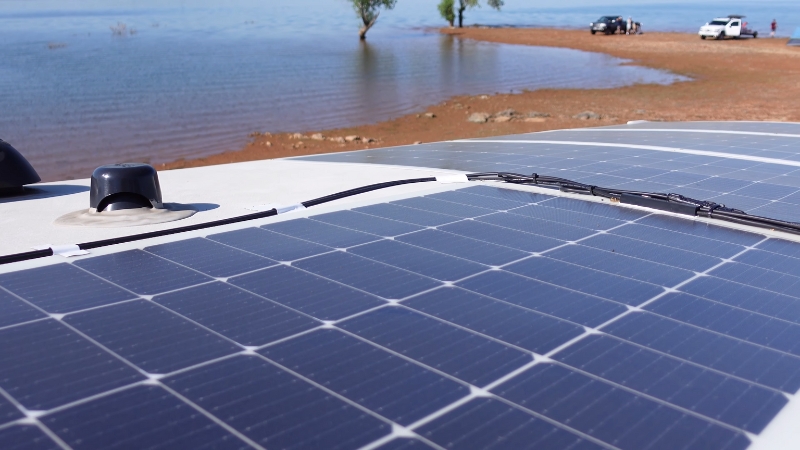
Solar Panel Formula For RV (Example 3)
How Big Should Your RV Battery Bank Be?
Usage Type
Daily Consumption (Wh)
Recommended Battery Bank (Ah @12V)
Weekend Camper
1,000–1,500 Wh
100–150 Ah
Moderate Usage
2,000–3,500 Wh
200–300 Ah
Full-Time Living
4,000–6,000+ Wh
400+ Ah
Real-World Solar Setup from a Full-Time RVer
FAQs
Final Thoughts

